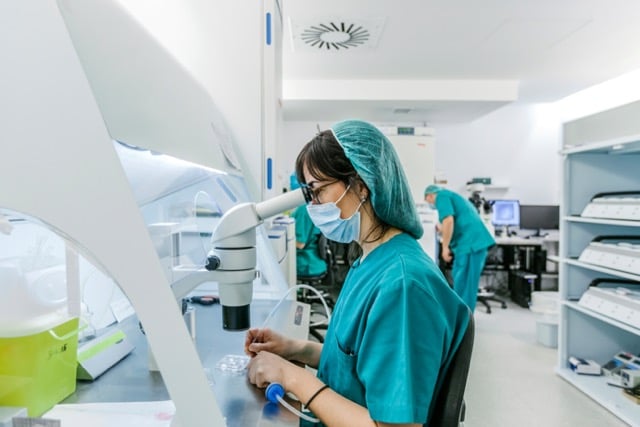Bacterial risk control strategies for platelets

Several interventions have been introduced to reduce the risk of platelet contamination, including donor selection criteria, skin disinfection, diversion of the initial collection volume, reduced storage time or bacterial testing of platelet components.
Despite those measures the European Commission reported 161 transfusion transmitted bacterial infections and 17 fatalities over the last 10 years10. As passive hemovigilance systems are in place this is most probable only the top of the iceberg. To further enhance the bacterial safety and availability of platelets in the United States new FDA-guidance on bacterial risk control strategies came recently into effect (October 2021). We shine light on the merits and pitfalls of two technologies which play a prominent role in this guidance document and give you insight on how Stanford Blood Center dealt with it.
Automated bacterial culture method
Sandra Ramirez-Arcos | Senior Scientist, Canadian Blood Services and Adjunct Professor, University of Ottawa | Ottawa, Canada
What are the merits of automated bacterial culture methods? Despite of almost three decades of routine use, variability of platelet storage times and screening protocols by different blood suppliers reflect the absence of a gold standard protocol for bacterial detection. What is the impact of those variables on the bacterial safety of platelet concentrates and are there any other pitfalls we need to be aware of?
Pathogen Inactivation
Laurence Corash | Chief Scientific Officer | Cerus Global Headquarters
Case Study | Stanford Blood Center
Stanford Blood Center (SBC), a leader in the fields of transfusion and transplantation medicine, supplies >17,000 platelet products per year to Stanford and other area hospitals. Stanford Blood Center was the first blood center of its size to implement pathogen reduction for 100% of platelet component in the USA. Discover why?
- United States Government Food & Drug Administration (FDA). Fatalities reported to FDA following blood collection and transfusion: Annual summary for FY 2017.
- Hong H, Xiao W, Lazarus HM, Good CE, Maitta RW, Jacobs MR. Detection of septic transfusion reactions to platelet transfusions by active and passive surveillance. 2016;127(4):496-502.
- Benjamin R.; Transfusion-related sepsis: a silent epidemic; Blood, 2016; Volume 127, Number 4
- Domanovic D.; Prioritizing of bacterial infections transmitted through substances of human origin in Europe; Transfusion 2017;57;1311–1317
- White K.; Bacterial contamination rate of platelet components by primary culture: a systematic review and meta-analysis; Transfusion 2020;60;986–996
- Walker S.; Residual bacterial detection rates after primary culture as determined by secondary culture and rapid testing in platelet components: A systematic review and meta-analysis, Transfusion. 2020;60:2029–2037.
- Summary of the 2020 annual reporting of serious adverse reactions and events for blood and blood components; European Commission, Directorate-general for health and food safety.
- Eke PI, Thornton-Evans GO, Wei L, Borgnakke WS, et al. Periodontitis in US adults: National Health and Nutrition Examination Survey 2009-2014. J Am Dental Assoc 2018; 149: 576-88
- Christian Damgaard, Susanne G. Sækmose, Martin Nilsson, Mogens Kilian: Periodontitis increases risk of viable bacteria in freshly drawn blood donations. Blood Transfus 2021; DOI: 10.2450/2021.0336-20
- Summary of the 2011 - 2020 annual reporting of serious adverse reactions and events for blood and blood components; European Commission, Directorate-general for health and food safety.


